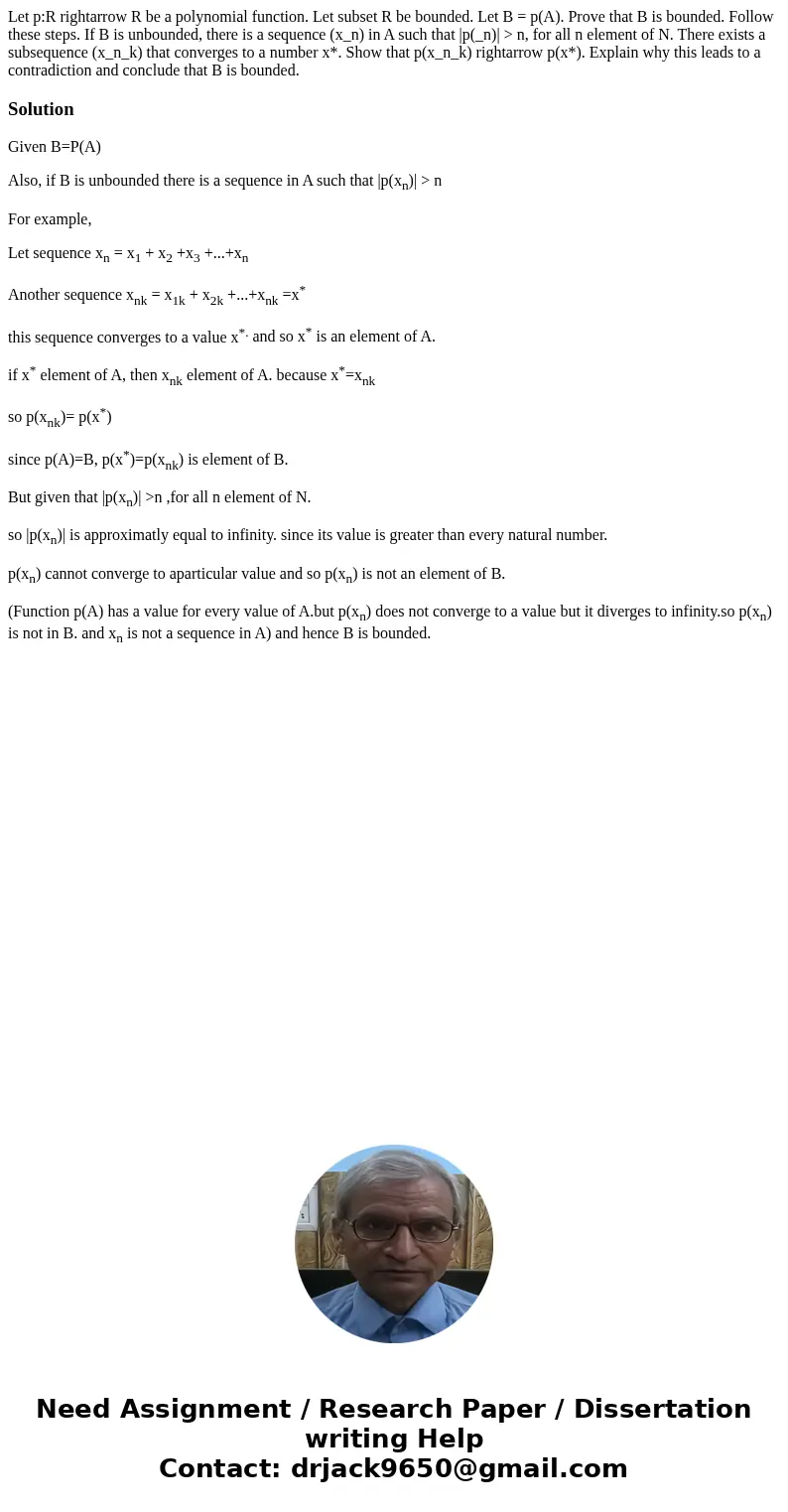Let pR rightarrow R be a polynomial function Let subset R be
Solution
Given B=P(A)
Also, if B is unbounded there is a sequence in A such that |p(xn)| > n
For example,
Let sequence xn = x1 + x2 +x3 +...+xn
Another sequence xnk = x1k + x2k +...+xnk =x*
this sequence converges to a value x*. and so x* is an element of A.
if x* element of A, then xnk element of A. because x*=xnk
so p(xnk)= p(x*)
since p(A)=B, p(x*)=p(xnk) is element of B.
But given that |p(xn)| >n ,for all n element of N.
so |p(xn)| is approximatly equal to infinity. since its value is greater than every natural number.
p(xn) cannot converge to aparticular value and so p(xn) is not an element of B.
(Function p(A) has a value for every value of A.but p(xn) does not converge to a value but it diverges to infinity.so p(xn) is not in B. and xn is not a sequence in A) and hence B is bounded.

 Homework Sourse
Homework Sourse